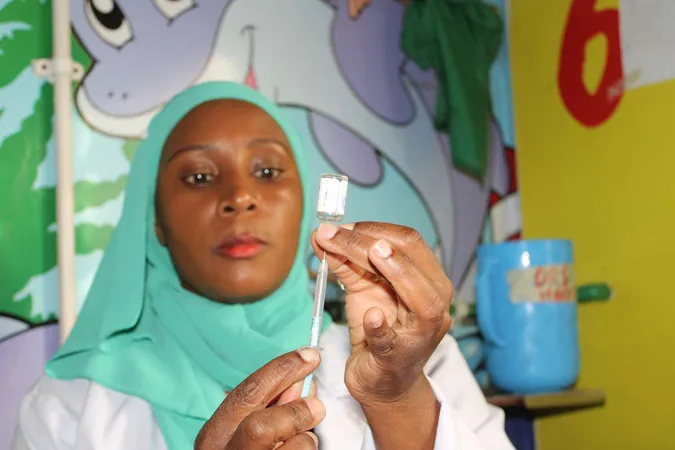
Cygnus Mission to ISS Scrapped Due to Spacecraft Damage: What’s Next?
2025-03-27
Author: Siti
Cygnus Mission to ISS Scrapped Due to Spacecraft Damage: What’s Next?
In a significant setback for cargo resupply operations at the International Space Station (ISS), NASA and Northrop Grumman have decided to scrap the upcoming Cygnus cargo mission, NG-22, originally scheduled to launch in June. This decision comes after the discovery of damage to the Pressurized Cargo Module intended for the mission.
In a statement released on March 26, NASA confirmed the unfortunate news that the cargo module sustained damage while en route from the supplier to Northrop Grumman. As a result, the mission will not proceed, and the next planned Cygnus mission is set for NG-23, with a tentative launch window no earlier than this fall.
“We are currently assessing the impact on the NG-22 mission timeline,” said Northrop Grumman spokesperson Dan Leone, emphasizing that expediting hardware for NG-23 remains a top priority. The company aims to ensure that supplies reach the ISS crew as planned.
This isn't the first time operational timelines have shifted for NASA and its commercial partners. Just a few weeks prior, NASA issued a warning regarding potential damage to the spacecraft due to what Northrop Grumman characterized as a 'commercial shipping accident.' Such incidents can have cascading effects on mission schedules and cargo manifests.
Dana Weigel, NASA's ISS program manager, highlighted the challenges that arise from unforeseen delays. She noted that NG-22 was previously slated for a February launch but was delayed due to an avionics issue that remained largely undisclosed. The consequences of these delays are significant: If further mission shifts occur, the need for consumables—like food and supplies for the astronauts—takes precedence over science investigations that would typically be included in a resupply mission.
To accommodate these changing needs, the upcoming SpaceX Dragon mission (SpX-32), set for launch no earlier than April 21, will see a reassessment of its cargo payload. This adjustment reflects the ongoing demand for consumables over scientific research materials for the ISS crew.
Northrop Grumman and SpaceX have been instrumental in delivering cargo to the ISS under contracts initiated in 2008. Meanwhile, a third contender, Sierra Space, is in the works with its Dream Chaser vehicle, aiming for a launch by late summer, pending successful testing and coordination with other ISS missions. Similarly, Japan's space agency, JAXA, is preparing to launch its upgraded HTV-X cargo vehicle, anticipated to debut this fall.
As it stands, the current Cygnus spacecraft (NG-21) remains stationed at the ISS since its arrival in August, despite past technical hurdles. The Canadarm2 robotic arm is scheduled to unberth this Cygnus on March 28, followed by a controlled reentry expected on March 30.
The landscape of cargo delivery to the ISS is evolving, and with it comes the need for adaptability amongst the various commercial partners involved. The latest developments remind us of the intricate and sometimes unpredictable nature of space missions, where one mishap could necessitate extensive adjustments and recalibrations.





 Brasil (PT)
Brasil (PT)
 Canada (EN)
Canada (EN)
 Chile (ES)
Chile (ES)
 Česko (CS)
Česko (CS)
 대한민국 (KO)
대한민국 (KO)
 España (ES)
España (ES)
 France (FR)
France (FR)
 Hong Kong (EN)
Hong Kong (EN)
 Italia (IT)
Italia (IT)
 日本 (JA)
日本 (JA)
 Magyarország (HU)
Magyarország (HU)
 Norge (NO)
Norge (NO)
 Polska (PL)
Polska (PL)
 Schweiz (DE)
Schweiz (DE)
 Singapore (EN)
Singapore (EN)
 Sverige (SV)
Sverige (SV)
 Suomi (FI)
Suomi (FI)
 Türkiye (TR)
Türkiye (TR)
 الإمارات العربية المتحدة (AR)
الإمارات العربية المتحدة (AR)